
PC power supply unit (PSU) replacements made easy – how it’s done and what you need to know
You were looking forward to playing a few games after work. Unfortunately, your computer wasn’t thinking along the same lines, because it won’t even turn on. So it’s time to look for the problem. There are a number of reasons why a computer might not be working, but in this case a defective power supply unit (PSU) seems a very likely suspect – especially if you’ve had your computer for quite a few years and you’re still using the PSU it came with. As the device is clearly not getting any power, get right on it and order a replacement PSU straight away. When it arrives, all you need to do is install it and then you’re good to go. You can find out everything you need to know about replacing a PSU here.
Contents
- How often do you need to replace a PSU?
- How long does a PSU last?
- Can you install any type of PSU?
- How much should you pay to replace your PSU?
- How do you install a new PSU?
- Can something break while you’re replacing the unit?
- Which PSU should you use for a gaming PC?
- How do you know that you need a new PSU?
- How long does it take to remove the old PSU and install the new one?
- How can you tell if the power supply isn’t strong enough?
- Which PSU is currently the best?
- Can you change the PSU in a laptop?
- Which PSU is recommended for laptops?
- Where is the PSU in the casing?
- How can you tell which PSU you have?
- Do all PSUs have the same connectors?
- How much power should a PSU have (watts)?
- Can the PC/laptop be damaged if the PSU wattage is too high?
- Conclusion
There are no set intervals for replacing a PSU. Generally, there are two scenarios in which you would need to replace the PSU. Of course, a PSU should be replaced if it is defective. But it should also be replaced if computer components are changed, resulting in the need for a higher-power PSU. Otherwise, the PSU may no longer be up to the job, causing problems when you use the computer. So there’s no need to replace the PSU after a set period of time but it certainly wouldn’t hurt to have a spare PSU on hand if the computer has been using the same PSU for several years. Then all you need to do is replace it, meaning you can then use the computer again straight away.
It’s difficult to say. There are several factors that determine a PSU’s lifespan. A high-quality PSU often has a longer lifespan than a very cheap model. How it is used also affects this. If a computer is used all the time, it highly likely that the PSU will have to be replaced after 4 or 5 years – or even sooner. Computers that are rarely used often only need a new PSU after many many years, if at all. High-quality PSUs can last a good 10 years even if they’re used a lot, and up to 15 years if they’re used less frequently. It’s impossible to say exactly how long a PSU will last. Unfortunately, there are usually almost no signs that they need to be replaced soon.
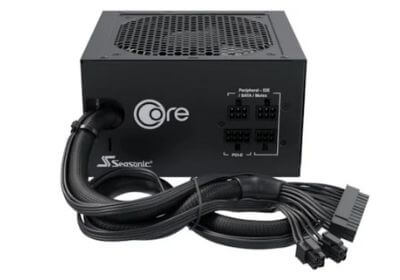
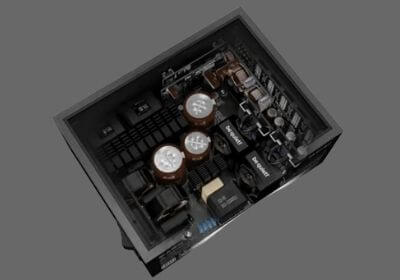
No, because the PSU needs to match the built-in components and provide sufficient power. At best, the new PSU should offer the same performance as the old PSU. Wattage is important here. PSUs are split into different watt classes based on their performance. A high-end PC that is used for gaming or complex programs needs a PSU that performs better than a PSU in a PC that is only used to create documents, for example. Generally, a PSU with output of between 250 and 300 watts is sufficient for a simple office PC that doesn’t have a dedicated graphics card. Computers with a dedicated graphics card that are not designed for games can handle a 300 watt PSU. For gaming PCs, a PSU may have to provide up to 1000 watts of power.
It all depends on whether you want to replace it yourself or pay someone to do it. The type of PSU you need is also a key factor. High-quality, high-performing PSUs are more expensive than cheap versions that only offer low performance, of course. You can get PSUs for between 25 and 300 euros and it’s cheaper if you can install it yourself, so you don’t have to pay someone else to do it. If you’re worried about doing it yourself and take your computer into a shop to have the unit replaced, you can expect installation costs to be around 30 to 70 euros.
Installing a new PSU is actually quite easy, here are some pointers:
- First you need to remove the old PSU. To do this, disconnect the computer from the power source, unscrew the screws on the casing and open the device. If you don’t know much about computers and are worried about not being able to reconnect the cables properly, just take a photo of it first so it’s easier to identify which of the different components you need to connect to the new PSU later on.
- Next, disconnect the cables from the motherboard. There are small hooks on the plugs – these need to be pushed down and then removed. You need to be very careful here.
- The PSU can now be unscrewed and carefully removed from the computer.
- The new PSU can now be installed. This process is almost the same in the reverse order, but the PSU needs to be screwed tight first. Insert the new PSU and connect it to the motherboard. Professionals will know which cable goes where straight away. Beginners can use the photos they took to help them with this.
- If everything is connected, you should briefly turn the computer on, allowing you to check to see if everything is working properly. If it is, you can turn the PC off again and disconnect it from the power source. Once the PSU is screwed in tight, you can close the casing. Then you’re done – the PC is ready for use again.
There is always the risk that a PC might be damaged whenever it’s being repaired. If you use tools when repairing the device, you can quickly damage other components. The wrong connectors might also be disconnected or reconnected incorrectly. That’s why you need to be really careful.
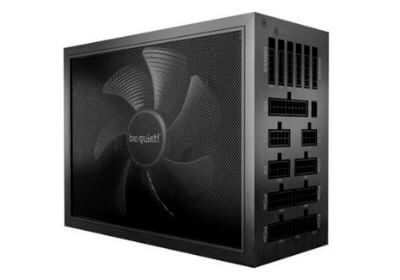
With a gaming PC, it is important that the PSU is high-performing. Most gaming PCs use very high-end components that need a lot of power from the PSU. If you use a PSU that’s too small, there’s a risk that the computer system might be damaged. For most gaming PCs, a PSU with output of between 650 and 800 watts is usually absolutely fine. PSUs with output of 1000 watts or more are only needed for really high-end devices – if you’re using a number of graphics cards in a PC or if you’re using sophisticated hardware, for example.
It’s obvious when a PSU is defective – the computer won’t turn on and nothing happens when you press the power button. If nothing comes up on the screen or if the device isn’t making any noises, you can assume that the PSU is defective. But you might notice that something is wrong with the PSU before it stops working altogether. For example, you might notice that the computer suddenly takes much longer to turn on or off. Even PCs that are shut down from time to time might quickly need a new PSU. Several short beeps in a row followed by the PC not turning on might also be an indicator. Malfunctions also indicate a defective PSU – if your PC keeps crashing or freezing while starting up or if there are memory errors, for example. But often there are no signs at all and the PSU might simply stop working overnight.
It will take professionals just a few minutes, while beginners or inexperienced hobbyists may need fifteen minutes to half an hour. Generally, it is better to take your time and make sure that all of the cables are disconnected and reconnected carefully. If you’re working with tools, you should also be careful to ensure that you don’t damage any of the components in the casing.
A PSU that isn’t strong enough can damage the computer. For example, fans might fail, causing the device to overheat and damage the components. The capacitors might also overheat. You can tell that the PSU has been overloaded by the PC occasionally restarting or simply crashing, for example. Unfortunately, it is often the case that the damage is done before the user realises that the PSU isn’t providing sufficient power.
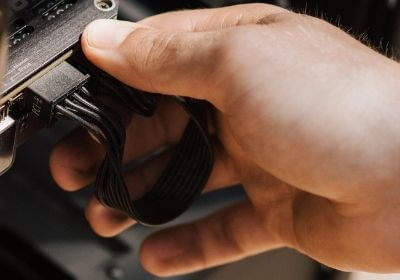
This question is a difficult one to answer because there are different watt classes and each computer requires a different performance level. There really is no such thing as the best PSU. There are models in all performance classes that are more popular than others, but that doesn’t necessarily mean that the others aren’t as good. Brand name PSUs do however usually perform better and last far longer than inferior quality products. If you’re looking to buy a new PSU, you should really consider whether you want to get a cheap model or whether it’s better to buy a high-quality power supply – taking use into consideration too. This is especially true if the PC isn’t that old.
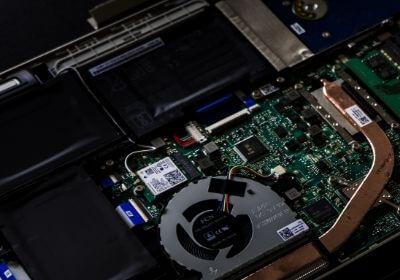
As the PSU is not located inside the laptop itself, it can be easily replaced. The main thing is to ensure that you buy a new PSU that meets the laptop’s requirements and can be used with the laptop.
It’s always best to buy the right PSU for the device from the laptop manufacturer. This way you can be sure that the unit will be perfect for the laptop. Usually, you simply have to give the manufacturer the product number and the exact name of the device. This data can usually be found on the bottom of the laptop, where in most cases there’s a sticker detailing the information you need. If the original PSU is no longer available, you might be able to use a universal PSU. Universal PSUs must fit the laptop. When buying one, pay attention to the voltage, current and polarity.
While the PSU can be found in the top part of older devices, today it is mostly located in the bottom part of the casing. And there’s a reason for that. The PSU has a fan. The fan brings cool air from outside into the casing while pushing any hot air outside. If the PSU is located at the bottom of the computer, the fan can suck in the cold air from the bottom and use it for cooling. Cold air sinks. This means the inside is well-cooled, preventing the PSU from overheating and allowing it to run more quietly as a result because it isn’t heating up so fast.
If you want to know which PSU is installed in the PC, you won’t be able to avoid unscrewing the casing. Even though there are a number of ways and tools to work out different computer components today, these don’t work when it comes to the PSU. That’s why you have to unscrew the casing. There is usually a sticker on the PSU that displays all of the important information like the power in watts or the voltage.
Not all PSUs have the same connectors. These vary depending on what their purpose is. However, most modern PSUs offer all of the components required by today’s modern PCs. Most have at least 4 SATA ports and 2 PCIe ports as well as an 8-pin and a 24-pin ATX connector.
That depends on which components the PC has. For a simple office PC, a 300 watt PSU is usually sufficient. Multimedia PCs and gaming PCs in the entry-level range work really well at 400 to 450 watts. High-end PCs should use a PSU of 550 to 800 watts. More powerful PSUs are only needed if there a lot of components that are used.
In general, the wattage only indicates maximum PSU output, so it indicates the PSU’s maximum performance. This means that it’s not bad or even damaging if PC components actually need less power. However, it’s not a good idea to buy a PSU that is much too powerful, as these models aren’t exactly cheap so you’re essentially spending money on nothing if you don’t need anywhere near that amount of power. Another drawback is that powerful PSUs also use more power when they are poorly utilised.
Replacing PC PSUs is straightforward. PC Power Supply Units are the kind of PC part that generally only needs to be replaced very rarely. It is also relatively easy to replace a PSU. You don’t need to be especially technically gifted to do this – all you need is a little skill and a careful way of working. The main thing you need to bear in mind is that you make sure that the new PSU you buy offers the right level of performance. If you’ve found the right PSU for your PC, you certainly won’t have any problems installing it. You’ll be using your computer again in no time.
